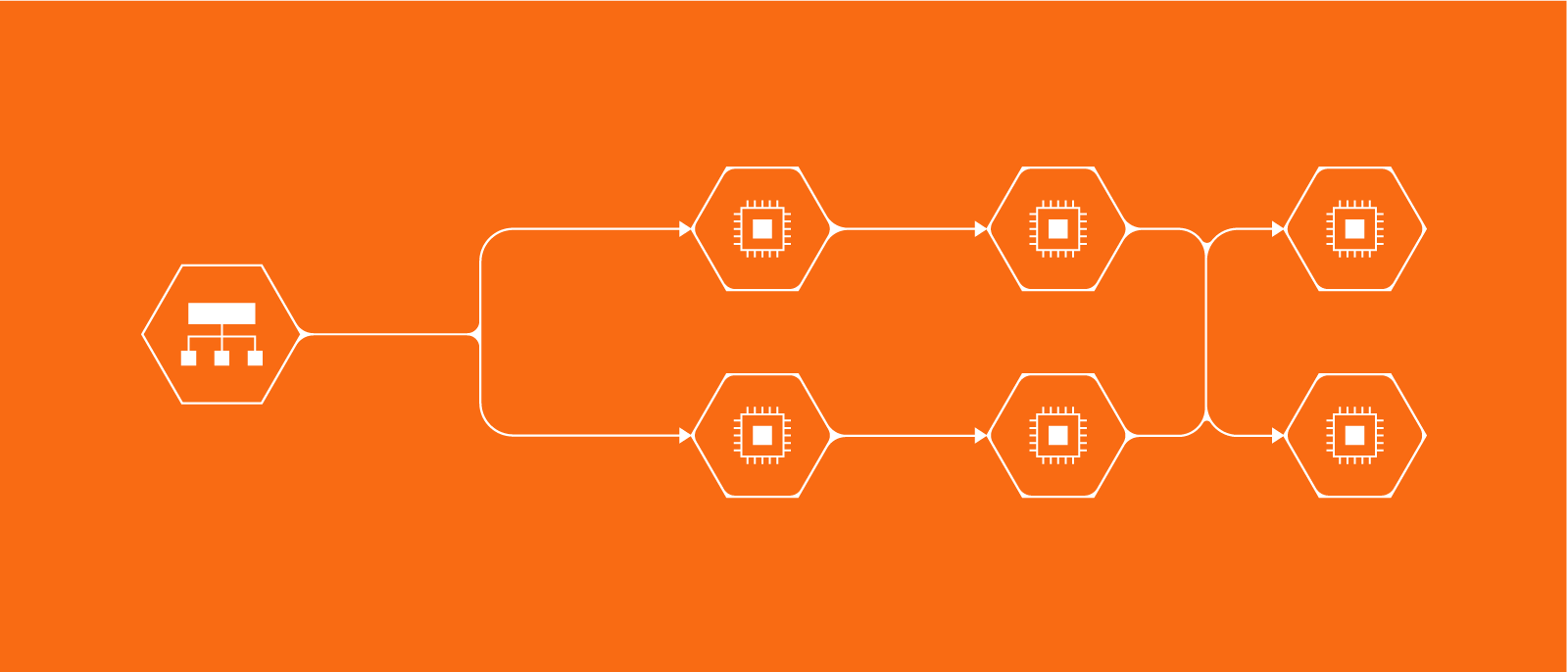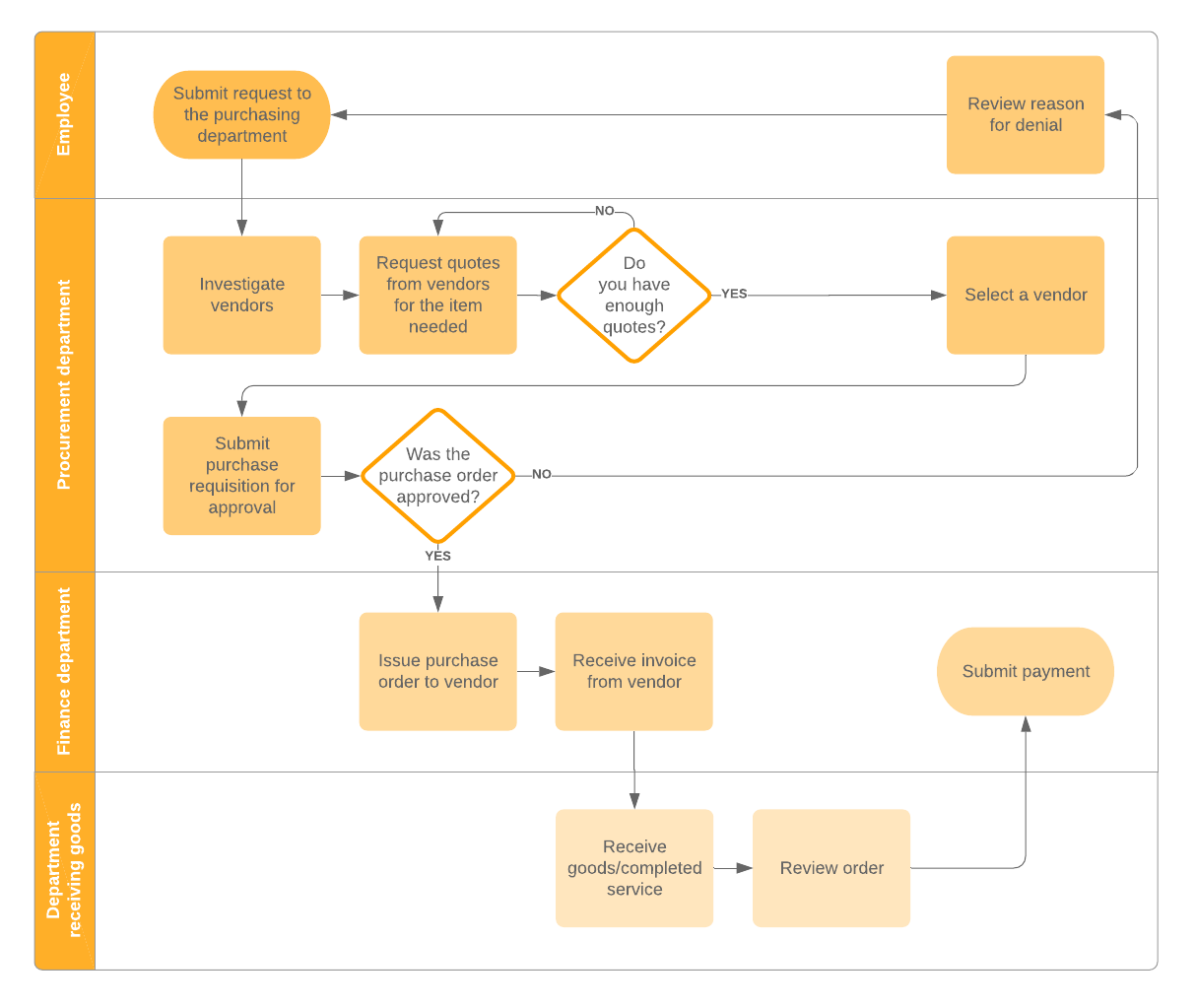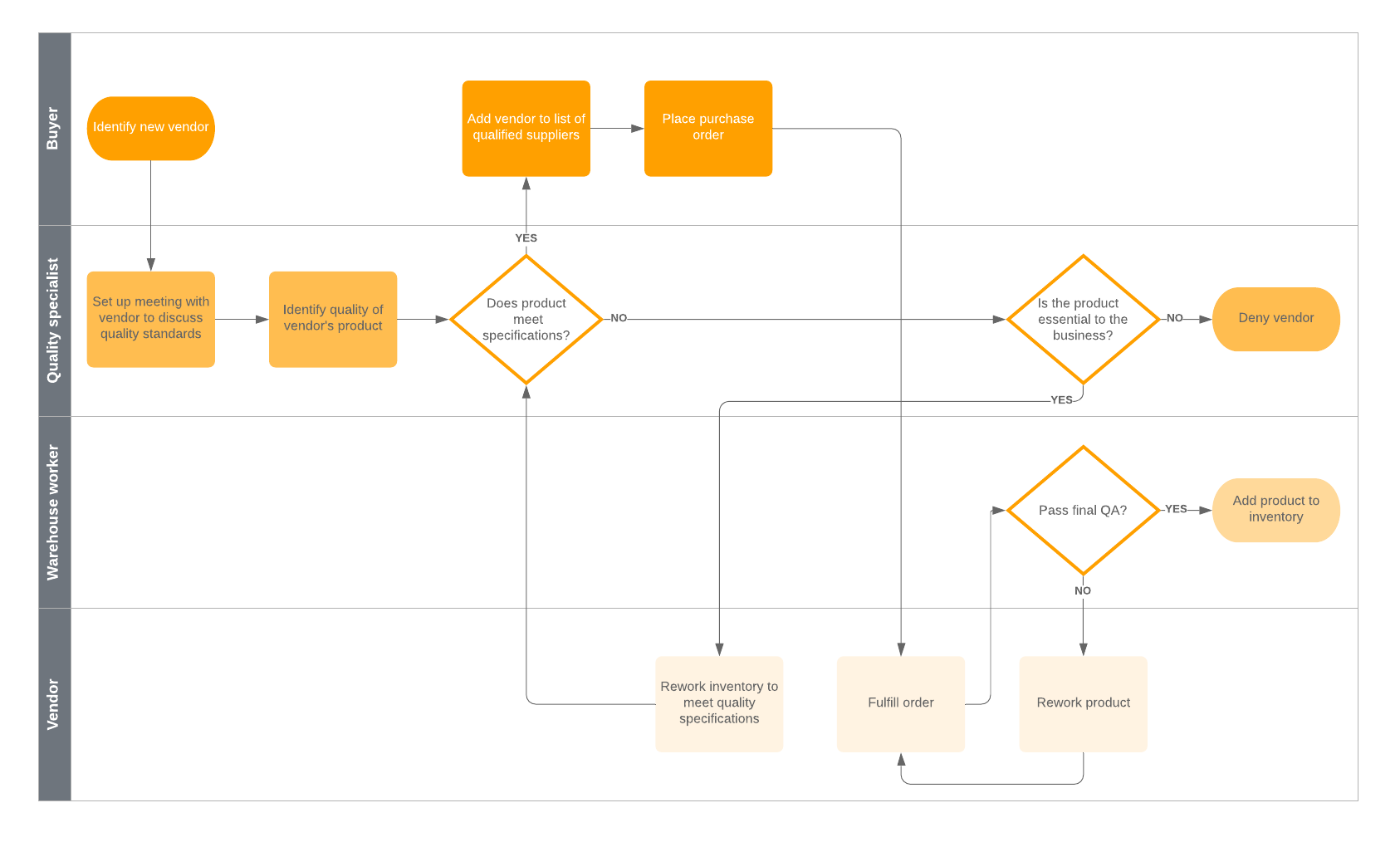
6 essential steps in the procurement process flow
Reading time: about 6 min
Topics:
For those of us who love shopping, the procurement process at first glance seems like a dream: It looks like it’s just shopping with someone else’s money. While that’s essentially true, procurement is much more complex than that. So complex, in fact, that procurement must be streamlined with a process called the procurement process flow.
Visualizing your procurement process helps all stakeholders be aware of the many moving parts involved in making purchases and helps identify potential issues.
The entire procurement management system can be tricky, but we’re here to help. We’ll define what the procurement process is and help you develop your own procurement process flow so that it is transparent for everybody. With the help of visualization, a typically complicated system can become efficient and painless.

What is the procurement process?
Proper procurement procedure consists of six main procurement process steps.
1. Need identification
This process starts when someone submits a request to the purchasing department. The request can be relatively simple (like a new software license for the marketing department) or complex (like a new office in Guatemala). Whatever it is, the request needs to be submitted in writing and sufficiently detailed.
2. Vendor selection
Next, the procurement department needs to investigate vendors, request quotes for the item needed, and select a vendor. This is an important part of the process because reputation, cost, speed of service, and dependability all need to be investigated before making a final decision. The rule of thumb is to get at least three quotes, but that’s a best practice that your organization will need to determine.
Learn more about the RFP (request for proposal) process.

3. Submit purchase requisition
Now it’s time to get approval for the purchase. After you’ve identified the vendor and agreed on the details, you’ll need written approval from the department responsible for approving purchases. You should provide purchasing with the following details:
- Party requesting item or service
- Quantity and description of item or service required
- Vendor’s information
- Price
4. Generate purchase order
After the purchase request has been approved, the finance department will issue a purchase order to the vendor. That purchase order signals to the vendor that the purchase request has been approved and that they can proceed with the request.
If your company intends on ordering from this vendor long-term (or if your company relies on a lot of third-party suppliers in general), you may want to develop a supplier onboarding process to ensure both parties understand what's expected.
5. Invoice and order
The vendor will then submit an invoice to the purchaser. The invoice is a request for payment and gives a detailed breakdown of the cost. The invoice will also give a deadline for payment, and you’ll need to submit payment before the deadline or else there may be a penalty (which is usually detailed in the invoice, as well).
The vendor will also send over an order, which is another detailed description of the goods or services requested. This is the last chance your organization has to change the request, so double-check both the invoice and the order for the correct items or services at the correct price.
6. Payment
After you've received the goods or services, it’s time to pay your vendor. Finance sends the payment over to the vendor in the preferred method of payment.
Keep for your records
All steps above need to be documented for internal and external audits, so you’ll need a central location to store invoices, orders, and other accompanying documentation. Make sure you’ve built in redundancy here; you’ll likely be using a digital purchasing method, so it may benefit you to print out paper versions of documentation and store them in a secure place in case of a total electronic apocalypse.
The 3 Ps
Your procurement process involves three main components.
1. People
This may seem obvious, but as you create your procurement process, remember to account for the busy schedules and complexities of the people involved. For instance, if one of the key decision makers is your CFO, and he’ll be in Hawaii for the next two weeks, you’ll need to consider that anomaly into your procurement cycle.
You should also remember that the cost and risk of the purchase will determine how many people are likely to be involved. If you’re purchasing a $750,000 hand-blown glass chandelier, you’ll need more approval than you would for the purchase of seven new Photoshop licenses. Decision makers may include:
- Manager of requesting department
- HR
- Purchasing
- Finance
- Legal department
- Operations
2. Process
Your organization’s process must be followed to complete the procurement. If it’s not, vendors may not get paid on time, purchases may be delayed, and your company's bottom line could be at stake. Following the process properly is vital to the health of procurement.
3. Paperwork
The third P is a bit of a misnomer because there’s often very little actual paper used these days. What we’re referring to here is the documentation used in the procurement process. Keep track of everything.
Procurement vs. purchase
The seven steps above are much more complicated than hopping online and sending over your credit card for a new pair of leggings. Purchasing is a part of procurement, but it’s just one step in seven. When you think of the purchase, think of it in the context of your organization and in the procurement process. Consider everything from vendors to stakeholders to cost. Procurement is more complicated than just swiping a credit card.
Visualizing the procurement process
If the steps above are giving you some anxiety, don’t worry—we have a solution. Procurement cycles are more easily understood through visuals. With Lucidchart, you can create your own customized procurement process flowchart with one of our templates.
In our visual workspace, you can tweak the process in real time for greater efficiency. But it goes far beyond just tweaking the process. You can also:
- Link to approved vendors: If you have an established relationship with a vendor, keep that information on hand for the future right within the flowchart.
- Link to internal forms: Purchase orders, quote requests, and purchase requisition forms are all vital to procurement. Keep the most up-to-date versions of the forms right within your flowchart for easy access.
- List of stakeholders: It’s great to keep the email addresses of stakeholders right in their appropriate steps. For instance, if Janet in finance needs to review a purchase request before a purchase order can be created, put her contact info right in the “Reviewed by procurement/finance team” step.
If your organization still relies on paper and spreadsheets, it’s time to make the switch to a digital solution. Procurement software will help automate the entire process, allowing your organization to quickly complete purchases and get access to discounts while ensuring that the purchase being made adheres to the purchase request. Software eliminates many of the human errors that are often responsible for bungling the procurement process. And, with software, it’s easy to pinpoint what went wrong to avoid making the same mistake in the future.
Done incorrectly, the procurement process can be a nightmare of bloated costs and staggering inefficiency. But with a visualization of the process, you’ll have a recipe for a streamlined process that results in lower costs, better relationships with vendors, and happier internal stakeholders.

Start improving your processes today, try Lucidchart.
Try for freeAbout Lucidchart
Lucidchart, a cloud-based intelligent diagramming application, is a core component of Lucid Software's Visual Collaboration Suite. This intuitive, cloud-based solution empowers teams to collaborate in real-time to build flowcharts, mockups, UML diagrams, customer journey maps, and more. Lucidchart propels teams forward to build the future faster. Lucid is proud to serve top businesses around the world, including customers such as Google, GE, and NBC Universal, and 99% of the Fortune 500. Lucid partners with industry leaders, including Google, Atlassian, and Microsoft. Since its founding, Lucid has received numerous awards for its products, business, and workplace culture. For more information, visit lucidchart.com.
Related articles
Keep Your request for proposal (RFP) process on track
When your business requires work from outside companies, the success of your company depends on your RFP process. Refine yours today!
How to develop a successful supplier onboarding process
Bringing on new suppliers? Without a clear system in place to onboard and develop those partnerships, you risk losing valuable business. Here’s how to create a successful supplier onboarding process and help both parties start off on the right foot.
